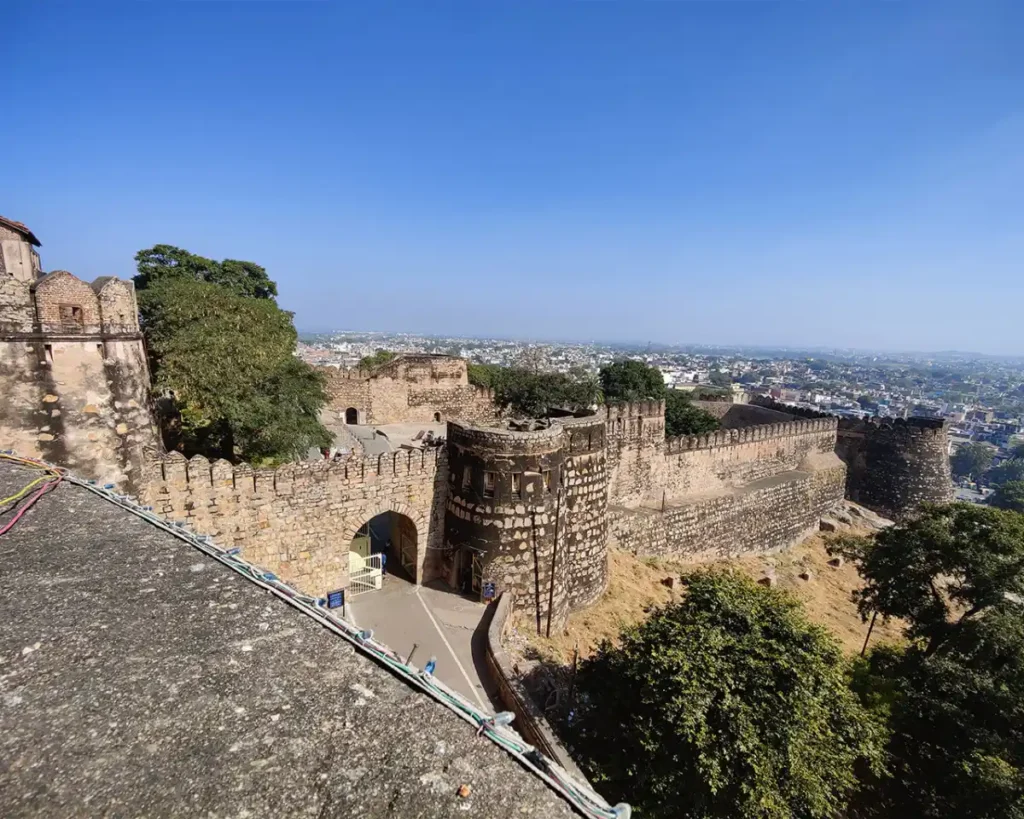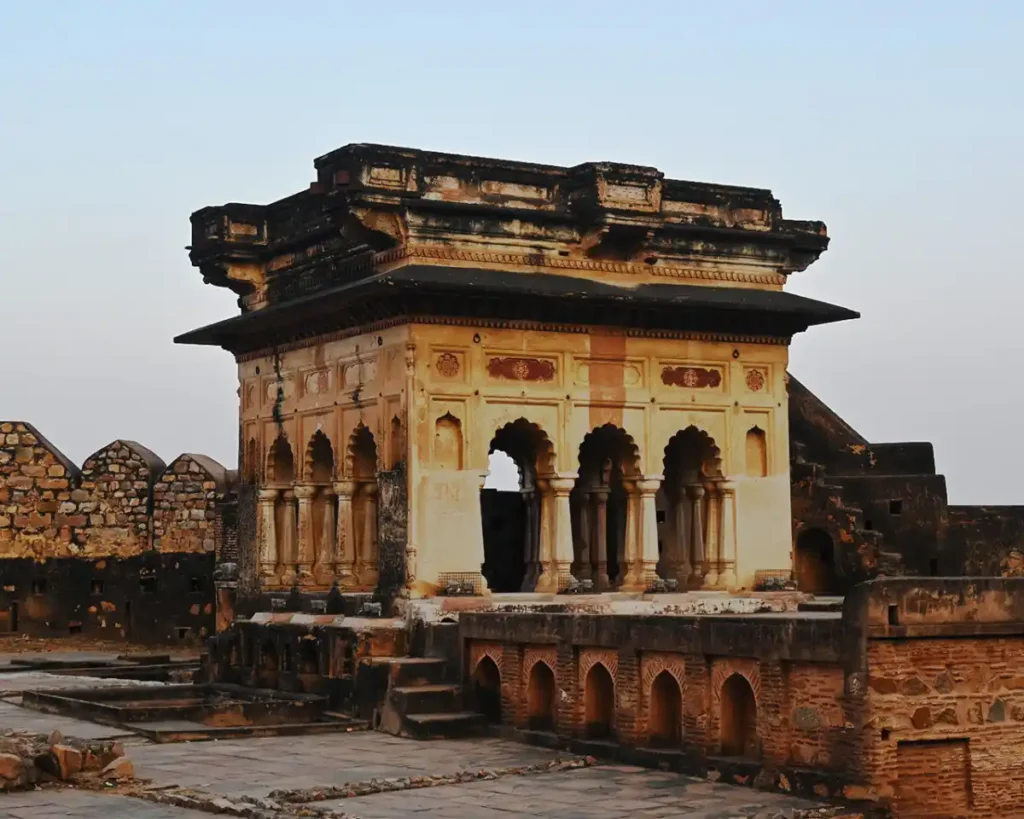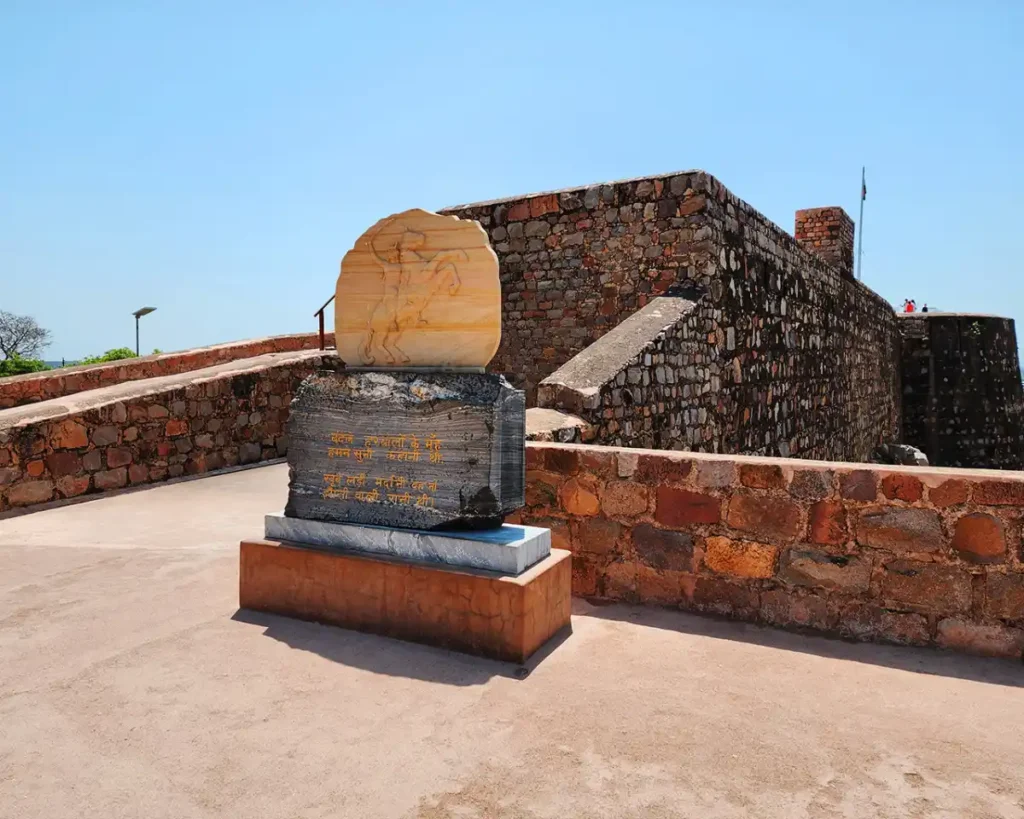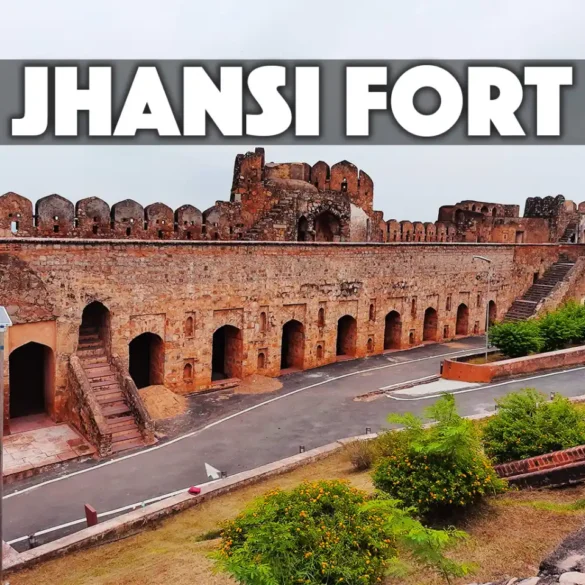Nothing can explain the history of a location more than a historical monument. The historical monuments and forts are the best examples of how the history of a particular location was carved out. For a history buff it is one of the most interesting activities ever to visit such historical structures. You will be able to know about the history of a place so well and also understand the culture of that location. If you are in Jhansi then the Jhansi Fort is one such location that you surely need to visit.
The Jhansi Fort has passed the test of time and is still standing tall in its aura. From the Revolt of 1857 to the great deeds of Jhansi Rani Laxmi Bai this fort is a witness to multiple historical events. So if you are visiting Jhansi then this article will be helpful for you. In this article I will mention every kind of Jhansi Fort information that you might need to plan a trip there. So keep on reading this article so that you can plan a trip there.
Jhansi Fort
Address of Jhansi Fort: Jhansi Fort Jhokan Bagh Jhansi Uttar Pradesh
Jhansi Fort timings: The Jhansi Fort opening time is 6 am in the morning and the closing time is 6:30 pm
Jhansi Fort ticket price: The Jhansi Fort ticket fee is Rs. 15 for Indians and for foreigners it is Rs. 200
How to reach Jhansi Fort
By air
If you are travelling by air then the nearest airport to reach the Jhansi Fort is Gwalior Airport. The airport is around 103 km away from the fort of Jhansi. You will get pre paid taxis or you can hire a car outside the airport and reach the fort from there.
By train
If you are travelling in a train then the Jhansi railway station is the nearest railway station to reach the fort. You will get buses as well as local transport like tempos and rickshaws to reach the fort from the railway station.
By road
The fort is located at the heart of the city so communication is very easy. You can either drive through nearby locations or cities or you can hire a car as well. If you are travelling from a nearby location you can even avail buses to reach the fort. The nearest bus stop to reach the fort is Jhansi Museum Bus Stop.

Best time to visit Jhansi Fort
The ideal time to visit the fort is from October to March which are the colder months. This is the time when the weather is mostly pleasant here and therefore it would be comfortable for a visit. Also one of the peak times to visit here is also the month of February. The famous Jhansi Mahotsav takes place during the month of February. It is one of the major festivals in Jhansi that attracts a huge chunk of tourists.
The Jhansi Mahotsav is a festival that pays tribute to the ancient culture of Jhansi. The Uttar Pradesh Tourism Government organizes this festival usually in the month of February or March. It is a week-long festival that is attended by a huge chunk of attendees. Also various prominent personalities come and attend this festival and perform here. Along with these there are seminars and workshops here as well that pays homage to the rich cultural history of Jhansi.
Jhansi Fort History
The chief of Bundela Rajput and the ruler of Orchha kingdom, Veer Singh Ju Deo Bundela constructed the Jhansi Fort in 1613. Mohammad Khan Bangash attacked this fort and Maharaja Chhatrasal in 1728. Peshwa Bajirao however helped him to win over him. As a sign of gratitude towards him, Chhatrasal offered Peshwa a part of his state which also included Jhansi. In 1742 Naroshanker became the Subedar of Jhansi. For the next 15 years he ruled over Jhansi and during the course of his rule he also extended the fort of Jhansi. This extension of Jhansi Fort was called Shankargarh. The Peshwa however called him back in 1757. Later Madhav Govind Kakirde and then Babulal Kanahai became the Subedars of Jhansi thereafter.
From 1766 to 1769 Viswas Rao Laxman assumed the position and later Raghunath Rao II took charge of this fort. After the death of Shiv Rao his grandson Ramchandra Rao took charge but he died in 1835 and his successor Raghunath Rao III took the position but he passed away in 1838. After so much change in powers the British rulers made Gangadhar Rao the Raja of Jahnsi. But till then the condition of Jhansi was already extremely poor financially and according to the administration as well. But Gangadhar was a potential ruler and he was able to take charge of this fort really well. He married Manikarnika Tambe in 1842 who later got the name of Rani Laxmi Bai.
What’s more?
Both of them had a son named Damodar Rao but he died only after 4 months of his birth. Later Gangadhar Rao adopted his cousin’s son and named him Damodar Rao. Before his death Gangadhar Rao wrote a letter and declared that Damodar Rao should be respectfully treated as his son. It also stated that whatever he had, including the government of Jhansi should be handed over to Laxmi Bai post his death. But the British government headed by Lord Dalhousi issued the doctrine of Lapse soon after. According to this they rejected the claim of Damodar Rao to the empire along with annexation of the state. Also they directed Rani Laxmi Bai to leave this fort and was given a pension of Rs. 60, 000 in 1854.
After that the revolt of 1867 broke out and Laxmi Bai assumed the control of the Jhansi Fort. She fought bravely and was one of the leaders of this revolt against the British as well. She left on his horseback before the British plundered the whole city. Later the British government gave the Jhansi city along with the Jhansi fort to Jiyaji Rao Scindia who was the Maharaja of Gwalior in 1861. However later in 1868 the British again took back the fort.

Architecture of Jhansi Fort
The fort is huge and spreads across an area of 15 acres. You can notice a distinct northern style of architecture of this fort which is quite different from other forts with southern architecture. At that time the kings preferred to build forts on the seabed but the position of this fort was quite unique in its own way. Jhansi Fort of Jhansi ka Kila is located on top of a hilltop, Bangira in the state of Uttar Pradesh. From 11th to 17th century this fort was constructed and it was also one of the major constructions of that time.
At the entrance of Jhansi Fort you will find the massive and iconic Kadak Bijli Cannon. Gulam Gaus Khan used to operate this cannon. Rani Laxmi Bai also used this cannon in the Great Revolt of 1857. This canon at the entrance of the fort reflects martyrdom and patriotism to get freedom. Also there is another cannon that the legendary woman gunner Moti Bai handled, the Bhawani Shankar Cannon. At earlier times the position of Jhansi Fort was vulnerable to bat attacks and wild overgrowth. After the death of Maharaja, Rani Laxmi Bai shifted the Rani Mahal outside. Raja Bir Singh Ju Deo originally constructed this fort in 1606- 27. The fort had immense strategic importance at the time of its creation.
The fort is 312 meters long and has a 225 meter width. There are granite walls of this fort that are almost 16 to 20 feet in thickness. One of the most interesting aspects here is that this fort has a total 10 entrances namely Datia Darwaza, Khanderao Gate, Unnao Gate, Laxmi Gate, Baragaon Gate, Sagar Gate, Chand Gate, Orchha Gate and Saniyar Gate.
What’s more?
At the entrance of this fort you can find temples of Lord Shiva and Lord Ganesha. There is one structure here which is like homage to Raghunath Rao the brother of Raja Gangadhar Rao for his undeniable love for architecture and art. Another fascinating aspect of this fort is the roof of the fort. Here the roof is beautiful and the architects had fabricated it with stucco in such a way that it formed a pond that sprinkles water all over.
You will also find an execution tower here which is a tower used for the execution of the prisoners. Another major attraction here is the Jumping Spot. This is the same spot from where Rani Laxmi Bai jumped off showing her bravery on top of her horse Badal to escape the fort.
There is a museum here as well that showcases a rich collection of ancient sculptures. A total of 22 supporting structures are present here with a strong wall with moat on two sides. The eastern side of the fort was destroyed which the British had rebuilt later in the course of time. Also they had integrated an additional floor to the Panch Mahal.

Light and Sound Show in Jhansi Fort
Every evening there is a special light and sound show in the fort that is one of the major attractions for tourists here. The show depicts different historical events and explains the rich history of Jhansi through audio visual effects. It explains events from the Great Revolt of 1857 and also showcases the life and bravery of Rani Laxmi Bai.
Jhansi Fort light and sound show timings: There are multiple shows here. During the summer season the timings are 7:30 pm for the Hindi show and 8:30 pm for the English show. The winter timings are 6:30 pm for the Hindi show and 7:30 pm for the English show.
Ticket price for Jhansi Fort light and sound show: Rs. 50 for Indians and Rs. 250 for foreigners.
Wrapping Up!
The Jhansi Fort is a living example of the bravery of Jhansi Rani Laxmi Bai and in no way you can miss out on this astounding fort. The beautiful architecture, the massiveness of the structure and of course the history attached to it makes it one of the most beautiful places to visit in Jhansi. So next time when you are planning a visit to Jhansi make sure you include this location in your itinerary. You will surely enjoy visiting this culturally and historically enriched location. Let me know if this article is helpful for you in planning a trip to this fort. Also let me know when you are planning a trip there.

